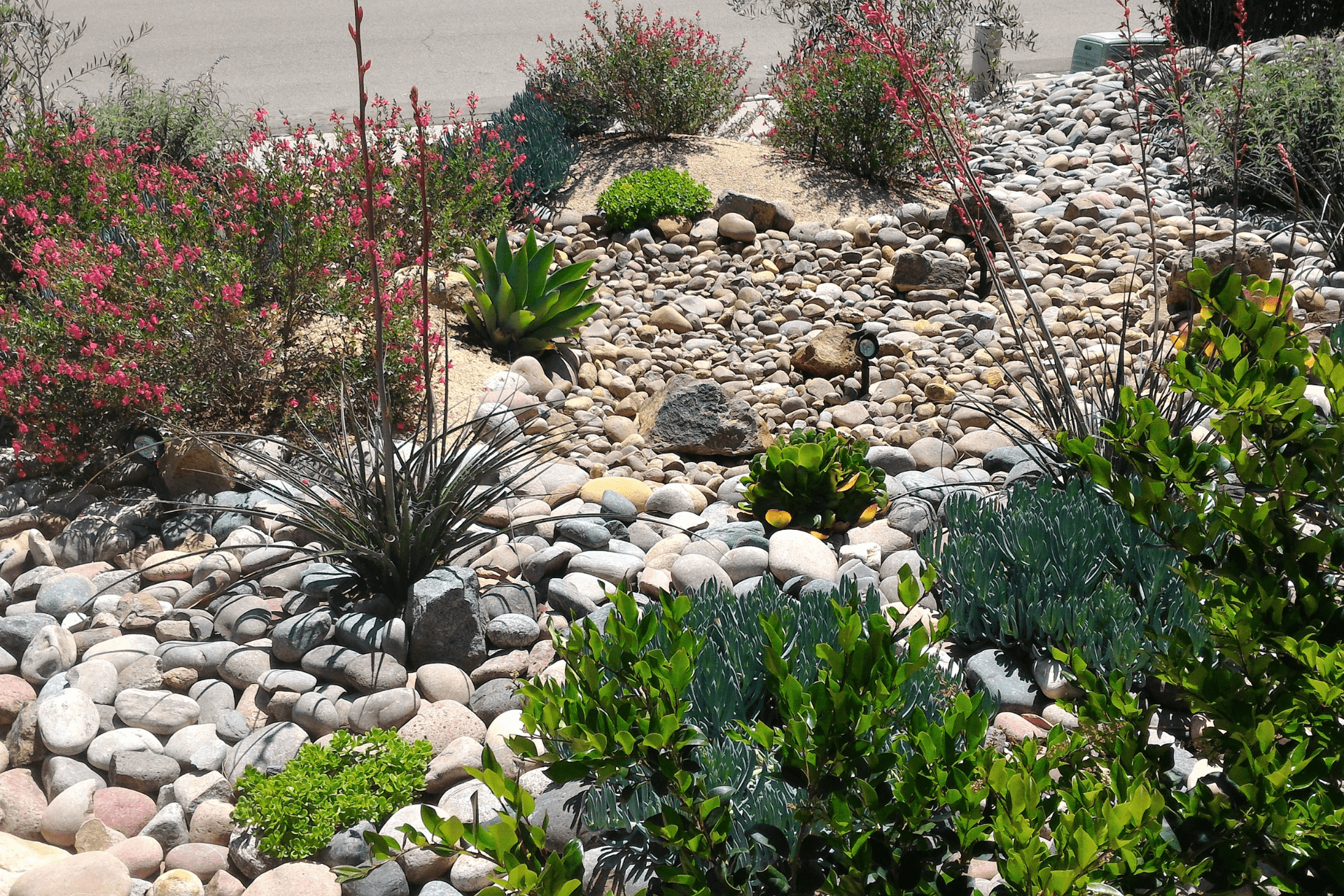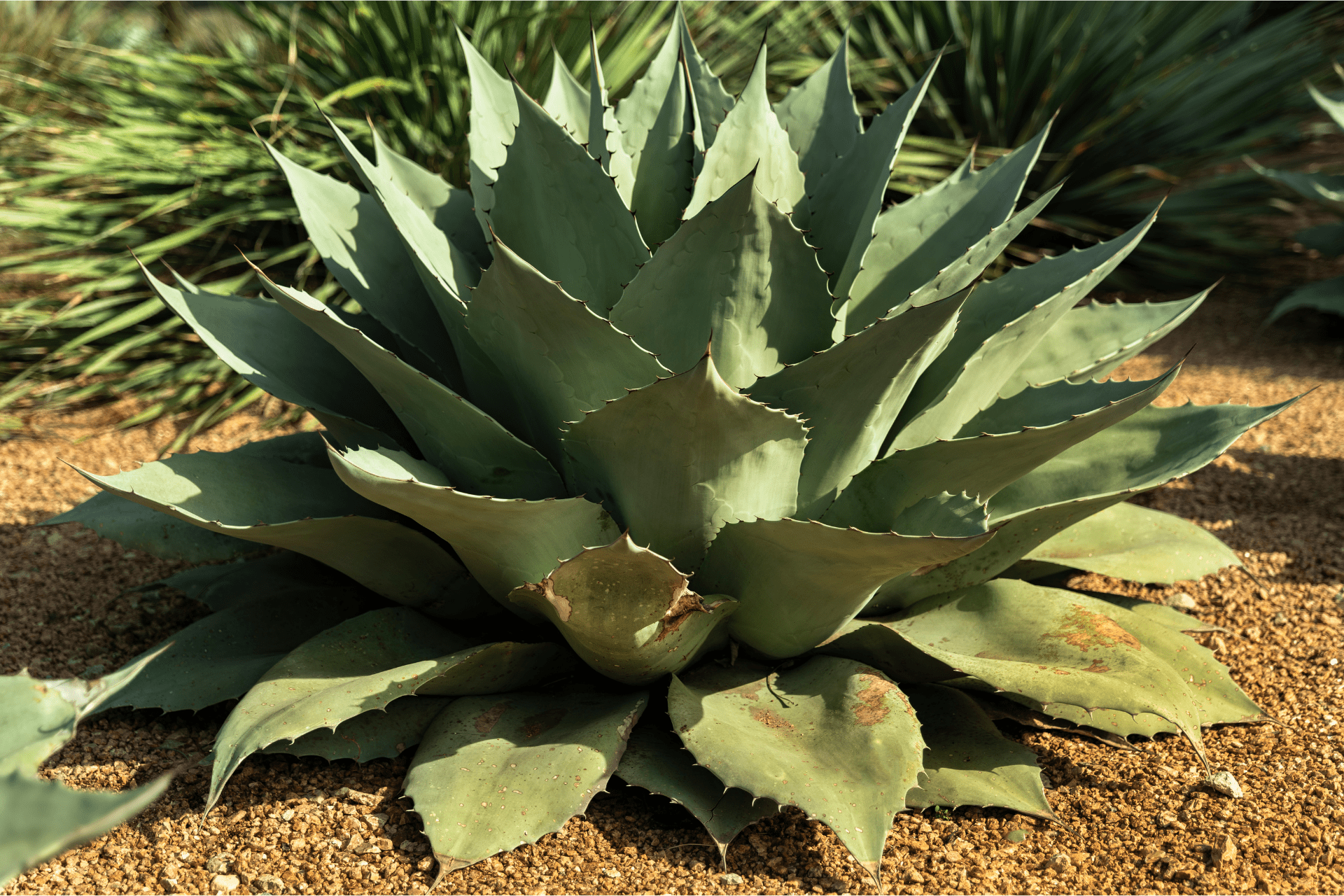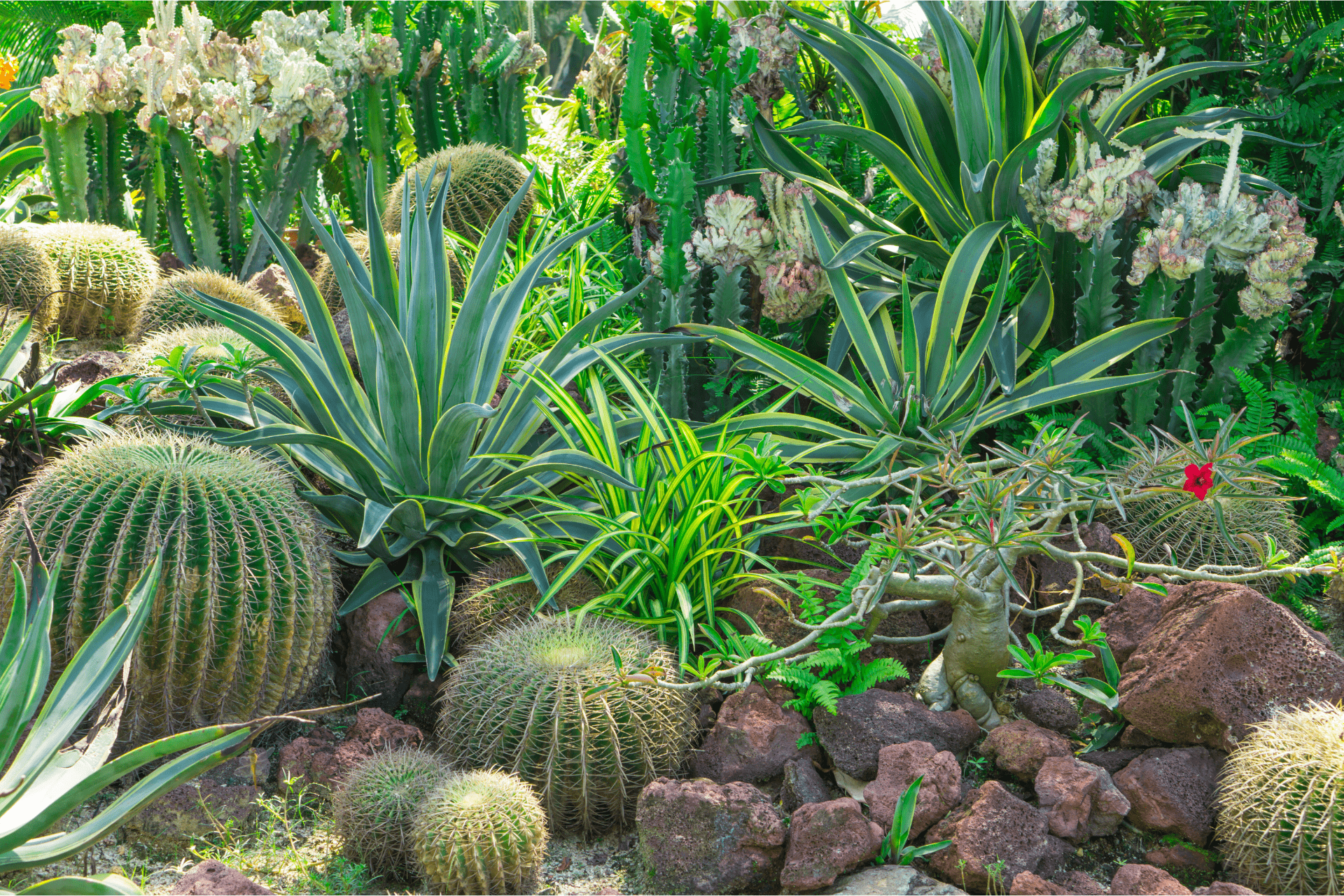Xeriscaping
Xeriscaping is a smart choice for Virginia homeowners. This water-wise landscaping method helps you save on water bills and reduces maintenance time, and works seamlessly with irrigation systems to ensure efficient water use.
It uses native plants to create a beautiful, sustainable garden that thrives in our local climate. Imagine less watering, fewer weeds, and a vibrant yard all year round, while
maintaining your outdoor space with ease.
Richmond Landscapes can help you switch to an environmentally friendly garden design and see the benefits for yourself.
What is a Xeriscape?
Xeriscaped yards use a landscape method that reduces water usage. It involves using native and drought-resistant plants. This approach helps create an eco-friendly, low-maintenance garden.
Of course, you’ll want to group plants with the same sun/shade requirements. Just because a plant is native doesn’t necessarily mean it automatically grows in full sun or full shade.
Types of Xeriscape Landscaping
You might wonder how to use this garden design in Richmond. Desert landscaping is not necessary in our local climate. However, this method applies to lawns and gardens everywhere for water conservation ideas.
Native Plants
Using native plants in your xeriscape garden has many benefits. They adapt to the local climate, so they need less water. Native plants also attract local wildlife, like birds and butterflies.
Here are a few native plants for Richmond and the capital region:
- Black-Eyed Susan: Bright yellow flowers for sunny spots
- Virginia Bluebells: Blue flowers that bloom in spring (and the state’s wildflower)
- Eastern Redbud: Small tree with pink flowers in early spring
- Wild Bergamot: Fragrant purple flowers that attract bees and butterflies


Drought-Resistant Plants
Plants with a low water need are great for xeriscaping. They can handle hot, dry summers and still look beautiful. They’re perfect for creating a low-maintenance garden.
Here are a few drought-resistant plants that are also native to Richmond.
- Purple Coneflower: Hardy plant with bright purple flowers
- Butterfly Weed: Vibrant orange flowers that attract butterflies
- Yucca: Tough plant with spiky leaves and tall white flowers
- Lanceleaf Coreopsis: Yellow flowers that bloom throughout the summer
Planning Your Xeriscape Garden
Planning your garden involves assessing your site and designing a water-efficient layout. You should also consider soil conditions, sunlight exposure, and plant grouping.
Site Assessment
Before starting your outdoor design project, assess your site thoroughly.
- Check the soil type to understand its drainage and nutrient levels.
- Observe the sunlight exposure in different areas throughout the day. Where are the sunny areas? Which spots stay in the shade most of the day?
- Identify any existing plants and decide which ones to keep.
Design Principles
Designing a xeriscaped garden involves creating a layout that maximizes water efficiency. It is environmentally friendly, but a good design beckons people outside to explore.
Start by grouping plants with similar water needs, a technique called hydrozoning.- Grouping ensures each plant gets the right amount of water without waste.
- Use mulch to hold moisture and reduce evaporation.
- Plan for soil preparation to improve drainage and nutrient retention.
- Incorporate paths and sitting areas to make your garden both functional and attractive.
- Decide if you’ll add water features or outdoor lighting.
Implementation Steps
Implementing a low-maintenance garden involves a few steps for success. An easy way to tackle the project is to break it down into smaller areas. For example, in June, set a goal to work on the area on the right side of the patio. Then, you might tackle that forgotten corner next to the fence in July.
- Soil Preparation
- Improve soil quality by adding organic matter.
- Ensure good drainage to prevent waterlogging.
- Xeriscaping Plants and Placement
- Choose native plants with low water needs that are suitable for Richmond.
- Place plants in areas that match their sunlight and water needs.
- Irrigation Systems
- Install efficient watering systems like drip irrigation or soaker hoses.
- Set up timers for a low-maintenance watering routine.
Maintenance Tips
Maintaining your xeriscape landscaping is simple with the right practices.
- Watering Guidelines
- Water deeply but less often to encourage strong root growth.
- Adjust watering schedules according to the season and rainfall.
- Pruning and Weeding
- Regularly prune plants to keep them healthy and promote growth.
- Remove weeds to reduce competition for water and nutrients.
- Soil and Mulch Care
- Check soil health periodically and add compost if needed.
- Replenish mulch for water conservation and to prevent weeds.
Conclusion
Xeriscapes use native and drought-resistant plants to conserve water in an eco-friendly design. Call us today to let our professionals help you enjoy the outdoor setting of your dreams. 804-409-9763
You can also use our handy
contact Form or email us at info@richmondlandscapes.com
to schedule an appointment.

Contact
Richmond (City), Virginia, United States of America
